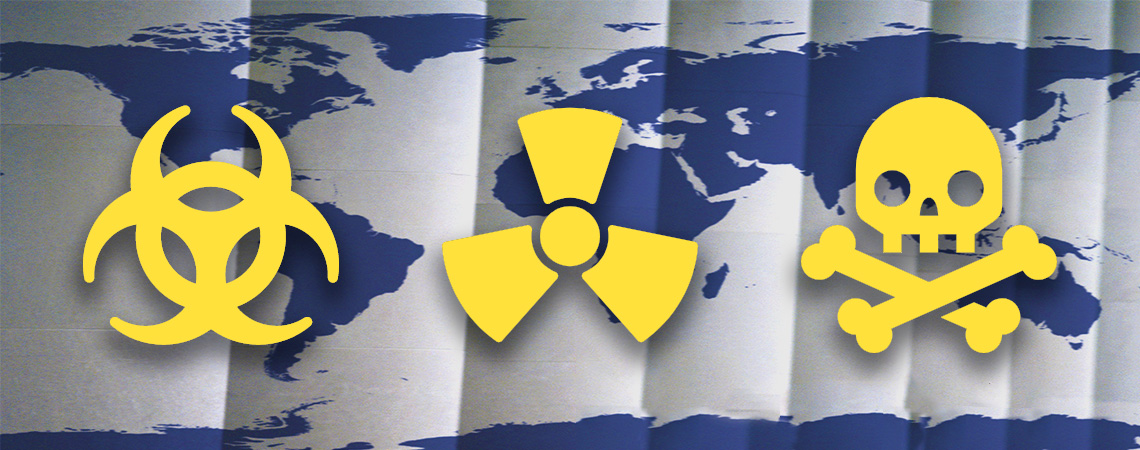Perspectives Posted on 2020-09-23 09:45:24
The Biological Weapons Convention and its practical application
Keywords
Authors
Chief of the Implementation Support Unit (ISU) of the Biological Weapons Convention, United Nations Office for Disarmament Affairs (UNODA), Geneva, Switzerland
The designations and denominations employed and the presentation of the material in this article do not imply the expression of any opinion whatsoever on the part of the OIE concerning the legal status of any country, territory, city or area or of its authorities, or concerning the delimitation of its frontiers and boundaries.
The views expressed in this article are solely the responsibility of the author(s). The mention of specific companies or products of manufacturers, whether or not these have been patented, does not imply that these have been endorsed or recommended by the OIE in preference to others of a similar nature that are not mentioned.
The Biological Weapons Convention (BWC) effectively prohibits the development, production, acquisition, transfer, stockpiling and use of biological and toxin weapons and is a key element in the international community’s efforts to address the proliferation of weapons of mass destruction.
The BWC was the first multilateral disarmament treaty to ban an entire category of weapons of mass destruction. It was negotiated from 1968 until 1972 and entered into force in 1975. In the years since then, increasing numbers of states have joined the Convention and it currently has 180 States Parties. A further six states have signed the Convention but are yet to ratify it, while another 11 states have neither signed nor ratified the Convention.
Although the BWC lacks a large international organisation, unlike other international instruments that deal with weapons of mass destruction, it does, however, codify a very strong global norm against biological weapons. As the Preamble of the Convention states, the use of biological weapons is seen as ‘repugnant to the conscience of mankind’. Importantly, the Convention provides a comprehensive ban on biological agents or toxins that are harmful not only to humans, but also to animals and plants. It is testament to the widespread acceptance of this norm that no country today identifies itself as possessing or seeking biological weapons and none argues that biological agents are legitimate weapons of war. The concept of deliberately using disease as a weapon of war has been thoroughly delegitimised.
However, the norm needs to be nurtured and maintained, and attention must be paid to advances in science and technology and changes in the nature of terrorism and armed conflict which have the potential to undermine the norm against biological weapons. As with many international agreements, it is not enough for states simply to join the BWC. The Convention requires each State Party to take measures to prohibit and prevent the development, production, stockpiling, acquisition or retention of agents, toxins, weapons, equipment and means of delivery by anyone under its jurisdiction, as well as parallel measures to prohibit and prevent the encouragement, incitement or assistance of others in any of these acts.
For much of its history of more than 40 years, the BWC has functioned as a traditional disarmament treaty, with the participation of national experts from Ministries of Foreign Affairs and Defence, and a small community of non-governmental observers. However, since the early 2000s, a more practical approach has been implemented, involving a much wider range of stakeholders, including relevant international organisations, such as the World Organisation for Animal Health (OIE). Under this approach, issues that have been discussed include, for example, biosafety and biosecurity, reviews of advances in science and technology, disease surveillance, assistance, preparedness and response in the event of the use of biological weapons, and capacity-building for developing countries.
More recently, it has become apparent that there is a lot of demand at the national and regional levels for discussions and practical activities around these topics. While the BWC lacks a large international organisation, its small three-person Implementation Support Unit (ISU) in Geneva has recently received many requests for assistance from developing States Parties. The ISU has not been provided with the resources to address these requests by itself but, fortunately, individual States Parties and regional organisations have stepped forward to support relevant activities. For example, in 2016 the European Union provided EUR 2.34 million in support of BWC implementation, and individual States Parties in a position to do so (i.e. Australia, Canada, China, Germany, India and Switzerland) have also provided support.
It is crucial that BWC States Parties continue to support the activities that highlight it as a ‘living treaty’
Whereas, in the past, the BWC was rather a ‘monolith’ in the landscape of international measures against biological weapons, it has now evolved into a hub with a wider network of different actors working on its practical implementation. In mid-2018, a series of Expert Meetings on specific technical topics will take place in Geneva. There will be technical discussions on all of the issues mentioned above. In addition, certain States Parties have already approached the ISU, willing to support any preparatory meetings in different regions of the world.
At the end of the day, the BWC is the only multilateral and comprehensive forum in which all of the issues and challenges described above can be discussed. It is therefore crucial that States Parties continue to support the activities that highlight the BWC as a ‘living treaty’ – for example, promoting universality to encourage more states to join the BWC, improving the Assistance and Cooperation Database and activities to support the provisions of the BWC that relate to practical issues, such as international cooperation, national implementation and preparedness and response.
http://dx.doi.org/10.20506/bull.2018.1.2766












